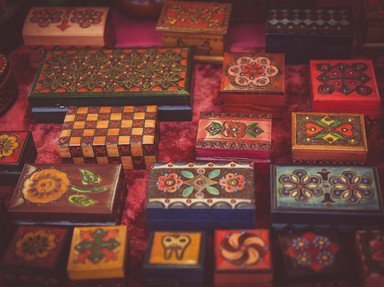
A Geography Mystery Sort... Trivia Quiz
Geography covers all sorts of things that go on in the world, from places to climate to people. Can you place these 16 words and names related to geography into the Mystery Boxes?
by Southendboy.
Estimated time: 3 mins.